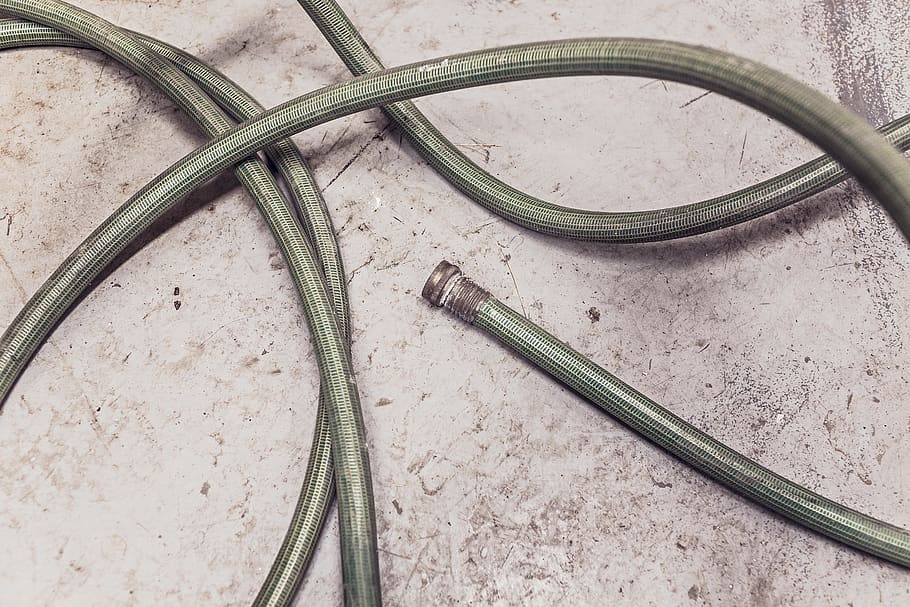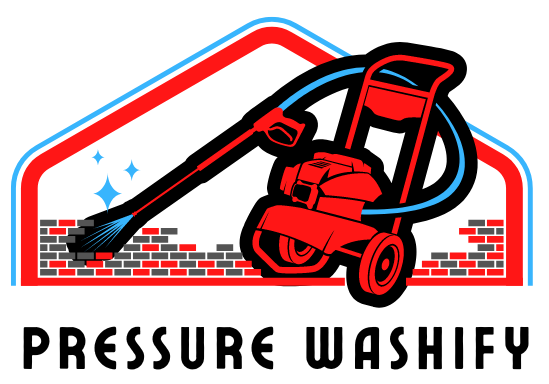Affiliate Disclaimer: This post may contain affiliate links, meaning we get a commission if you decide to make a purchase through our links, at no extra cost to you.
If you’re anything like us, your pressure washer is an essential tool for keeping your home and yard in top condition. Whether it’s cleaning the driveway after a big snowstorm, washing off a dirty car or spraying down your deck before sealing it—pressure washers do a lot of work.
Therefore, regular pressure washer maintenance is required to keep them operating properly.
Pressure Washer Pump Maintenance
Pressure washer pump takes water from a source, pumps it through the hose and nozzle and forces it out at high pressure to clean whatever surface you want. The pump should be checked for leaks and clogs regularly, as well as after every use.
The pump is the heart of your pressure washer.
How To Check Pressure Washer Pump Oil Level
When you are doing maintenance on a pressure washer pump, the first thing you should do is check the oil level. If you do not have a dipstick, you can use a ruler. You want it to be just above the minimum mark and no more than half an inch below the maximum level.
If your pump has been going for a long time, some of its internal parts may have gotten hot enough to burn off some of their protective coatings, leaving bare metal exposed. This could cause those parts to wear out faster than normal and even damage them forever if they are not replaced right away.
If you see a lot of metal bits in the oil, your pump needs to be fixed or replaced. You can also use a magnifying glass or a microscope to check for wear and tear on other moving parts. They will also need to be replaced if they are worn down past their tolerance levels.
How Often Should I Change The Oil In My Pressure Washer Pump
How often you change the oil in the pump of your pressure washer depends on how often you use it. If you use your pressure washer often, you should change the oil at least once a year. If you do not use it often, you should change the oil as a general rule every 200 hours.
The oil will naturally break down over time, and this will happen faster the more you use your pressure washer. The oil in your pump helps protect it from damage, so if you want to extend its lifespan as much as possible then change it regularly.
How To Replace The Oil of Pressure Washer
It is easy to check the oil level. First, pull the plug and let it run for a few seconds to make sure that all the water in the pump has cleared out. Then, remove the long metal stick on top of your engine that is the dipstick for your pressure washer. It should be easy to take off; just turn it counterclockwise until you hear a click and it comes off.
Next, use some paper towels or rags to clean up the area around where you will be looking. You do not want dirt to get into your engine! Put one end of your dipstick into the hole on top of your motor block and measure how far down it goes before coming back up. This is how much oil needs to be changed when we are done here today.
Lastly, add new motor oil based on what the user manual (if there is one) says should be used. If there is no information there, just follow these basic rules:
If you are using a synthetic mix, use 1 liter for every 5 liters of capacity per year. If you are using traditional oil, use 0-1 liter for every 5 liters of capacity per year.
Every time you change the oil, you should also change the oil filter.
Also, every time you fill up, make sure to check the oil level. If they are low, you will need to fill them up before you can drive again.
Once you are done, put the dipstick back in its hole and turn it in a clockwise direction until it is tight. Then, turn on your pressure washer again and let it run for a few seconds before turning it off.
Click here to learn more about what type of oils you can use in pressure washers.
Pressure Washer Air Filter
Pressure washer air filters are used to protect your engine from dirt and debris, which can clog the engine or cause it to overheat. Replacing and cleaning the air filter is an important part of the pressure washer maintenance schedule.
It’s recommended to replace your pressure washer air filter every season or after using it for about 100 hours of operation.
If you notice performance issues such as reduced water flow or power loss, then it could be time to replace your filter.
How To Replace The Air Filter
- Find the location of your machine’s air filter by looking at your owner’s manual or asking someone at a local hardware store if they have any experience working with these types of machines (they may know exactly where it is).
- Remove old filters by unscrewing them with a wrench or screwdriver, depending on how tightly they’re attached.
- Wash new filters in warm water before installation; this will remove any debris from manufacturing or shipping processes that might be stuck on them
- Once the filter is clean, install it back into the machine. Follow any instructions provided by your manufacturer, and make sure that each part you remove is put back in its proper place.
Pressure Washer Hoses, Wand and Other Fittings.
Pressure washer hoses are one of the most important parts of your equipment. If they’re not working properly or if they’re too small for the job, you’ll have a tough time getting anything done. Hose inspection is a critical part of pressure washer maintenance schedule.
Check your hose for cracks and leaks; if any are present, replace it with a new one. Check to make sure all fittings are tight and secure; loose fittings can cause water to spray everywhere instead of where you want it to go.

How To Repair Leaky Hoses
Step 1: Check the hose for leaks.
Step 2: Clean out the threads of the nozzle and coupling with a brush or paper towel.
Step 3: Put a few drops of dish soap on the threads and screw them together again. If soap bubbles come out, you have a leak. Remove the nozzle and try to find where it’s leaking from. Use soapy water to follow the trail back to its source.
Step 4: Repairing a leaky hose is usually pretty easy. You can use plumber’s tape or Teflon tape at each connection point (buy it in a hardware store). Apply around 1/2 inch of tape onto both sides of each pipe fitting, using a clockwise motion on one side and counterclockwise on the other side (this will make your life easier). This is especially important if you have used an aftermarket nozzle that does not use standard male/female fittings like most newer pressure washers do!
You can also use plumber’s putty or epoxy instead of tape if you prefer those options better but keep in mind that any epoxy will take longer to set up than plumber’s putty or Teflon tape so plan accordingly!
Read our detailed guide for fixing pressure washer hoses.
Pressure Washer Maintenance Checklist
You can follow our handy maintenance sheet for a quick reference:
| Component | Maintenance Steps | Frequency | Replacement Parts | Estimated Cost (Gas) | Estimated Cost (Electric) |
|---|---|---|---|---|---|
| Engine (Gas) | 1. Change engine oil | Every 200 hours(50 hours after 1st use) | Engine oil | $10-$15 | N/A |
| 2. Clean or replace air filter | Every 25 hours | Air filter | $5-$10 | N/A | |
| 3. Clean or replace spark plug | Every 100 hours | Spark plug | $5-$7 | N/A | |
| Motor (Electric) | 1. Inspect motor for debris and dust | Every 50 hours | N/A | N/A | $0 |
| 2. Check for loose or damaged wires | Every 100 hours | Wiring repairs | N/A | $20-$50 | |
| Pump | 1. Change pump oil | Every 50 hours | Pump oil | $8-$12 | $8-$12 |
| 2. Check for water leaks | Every 25 hours | Pump seals/valves | $10-$30 | $10-$30 | |
| 3. Inspect for clogs and clean pump inlet filter/screen | Every 25 hours | Inlet filter/screen | $5-$10 | $5-$10 | |
| Hose & Nozzles | 1. Inspect hose for damage and leaks | Every 25 hours | Pressure hose | $20-$50 | $20-$50 |
| 2. Clean and inspect nozzles for clogs | Every 25 hours | Nozzles | $5-$10 | $5-$10 | |
| Pressure Gun/Wand | 1. Inspect for leaks and damage | Every 50 hours | O-rings, seals | $5-$10 | $5-$10 |
| 2. Check trigger for smooth operation | Every 50 hours | Trigger mechanism | $10-$20 | $10-$20 | |
| Wheels & Frame | 1. Inspect wheels for wear and damage | Every 100 hours | Wheels | $15-$30 | $15-$30 |
| 2. Check frame for rust and damage | Every 100 hours | N/A | $0 | $0 | |
| Chemical Injector | 1. Flush injector with clean water after each use | After each use | N/A | $0 | $0 |
| 2. Inspect and clean injector screen | Every 25 hours | Injector screen | $2-$5 | $2-$5 |
Please note that this table is an estimation for safe maintenance practices, however the actual cost and maintenance frequency depends on the specific model and brand of your pressure washer. It is recommended to consult your pressure washer manual for most accurate information.
You can clearly observe that maintenance cost of gas pressure washers is significantly higher than their electric counterparts. If you don’t need higher pressures and flow rates then electric pressure is a good choice.
Read our review of one of the best electric pressure washers available in market, the Active 2.0 Pressure Washer.
Where Can I Take My Pressure Washer For Repair
You can take your pressure washer to any repair shop, but you’ll want to make sure they are qualified and have experience with this type of equipment.
You should ask these questions:
- What kind of training do they have? Do they work on similar machines regularly?
- Are they able to diagnose problems over the phone or will I need to bring it in for an assessment.
- Will they be able to give me an estimate for parts and labor costs before beginning repairs so that I know what my total bill will be when everything is done (including taxes).
If you are looking for a good repair shop, call around your area or search online. You can also look through the yellow pages or search online for “pressure washer repair” and see what comes up.
How To Keep Your Pressure Washer Working For Many Years
Follow these tips to keep your machine in top working condition:
- Clean and lube the engine components. Check your owner’s manual for specific instructions on how to do this. Make sure you follow all safety precautions when working with gasoline.
- Inspect hoses and electrical cords. Replace worn parts immediately so you don’t risk injuring yourself or damaging your equipment when using it.
- Check the pressure regulator frequently to make sure it’s not leaking or sticking open or closed.
- Check the pump seals regularly to ensure they are not leaking oil into the engine compartment, which could cause an oil fire if left unchecked.
- Use only approved detergent formulations when cleaning your vehicle or other surface that needs cleaning with a pressure washer because some formulations can damage paint jobs if they come into contact with them while washing.
- Don’t leave your pressure washer unattended. Always have it plugged in and ready to use, but unplugged from the power source when not in use.

Conclusion
If you own one of these machines, then obviously you want it to last. So knowing how to care for it and operate it in a manner so that it remains effective will ensure that your investment is worth its cost.
By following the above steps, you can perform basic pressure washer maintenance at home yourself. Essentially, with the right maintenance plan, your pressure washer should last you for years.








